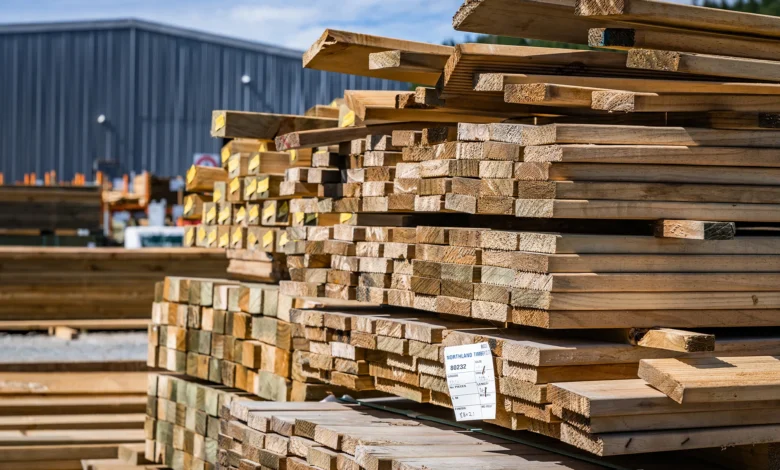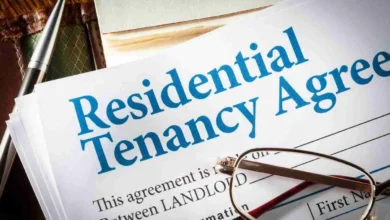Why Treated Timber Is Essential for Outdoor Construction

If you’ve ever worked on an outdoor project in the UK — whether it’s building a deck, putting up a fence, or creating a garden shed — then you already know the weather isn’t exactly forgiving. Rain, dampness, frost, and even summer humidity can all take a serious toll on materials. That’s why choosing the right kind of wood is so important. And for almost every outdoor job, treated timber is the smart choice.
So what exactly is treated timber? And why is it considered essential for outdoor construction? Let’s break it down in real-world terms.
What Is Treated Timber?
Treated timber is regular wood that’s been specially processed to make it last longer when exposed to the elements. The process involves adding preservative chemicals that protect the wood from rot, fungal decay, and insect damage. There are a couple of ways this is done — the most common in the UK is pressure treatment, where preservatives are forced deep into the wood under high pressure.
This makes treated timber far more resilient than untreated wood, especially in outdoor settings where moisture and weather exposure are constant concerns.
Why It Matters in the UK
The British climate isn’t exactly known for being kind to outdoor materials. Even in the warmer months, rain and damp air are never far off. And in the winter? Frost, wet ground, and long spells of moisture can be brutal on timber.
Untreated wood can soak up water, swell, warp, and eventually rot. If insects or fungi find their way in, the structural integrity can go downhill fast. That means a garden fence might lean or collapse, decking could weaken, or a shed might start growing mould from the inside out.
Treated timber is designed to stand up to all of that. It’s made to resist water absorption, discourage insect activity, and hold its shape even when the temperature and humidity shift from one week to the next — which, as we know, happens often here.
It Lasts Longer — With Less Hassle
One of the biggest advantages of using treated timber is peace of mind. Once it’s in place, you won’t need to worry about replacing boards or posts every few years due to rot or damage. In fact, when properly maintained, treated wood can last a decade or more — and in many cases, even longer.
You also don’t have to fuss over it constantly. A quick seal or stain every couple of years can help with appearance and add a little extra protection, but the timber itself is already prepared to face the elements. That makes it an especially good choice for people who want to build something once and enjoy it, not fix it every season.
Where Treated Timber Makes the Most Sense
Outdoor spaces can be tough on materials, and some areas are worse than others — especially spots that stay damp or have direct ground contact. This includes things like:
- Fence posts sunk into the ground
- Decking frames and boards
- Raised garden beds
- Pergolas and garden furniture
- Sheds and garden rooms
- Outdoor steps or retaining walls
These are all areas where wood is exposed to rain, soil, and temperature swings. Using untreated wood here would be asking for trouble. Treated timber holds up, stays strong, and helps avoid problems like sagging, splitting, or worse — structural failure.
Choosing the Right Timber for the Right Job
Not all treated timber is exactly the same. Some types are made for projects above ground, like cladding or fencing rails, while others are strong enough to be in direct contact with the ground, like fence posts or decking joists.
When you’re buying timber, it’s worth checking what the timber has been treated for — especially if you’re building something that’s going to sit directly on the soil or be heavily exposed to rain. A good supplier will always tell you what the wood is suitable for, and it’s always better to ask than guess.
A Few Quick Tips When Working with Treated Timber
If you’re using treated timber for the first time, there are a few simple things to keep in mind:
- Use the right fixings – Regular nails and screws can react with the chemicals in treated wood. Go for stainless steel or galvanized hardware to avoid rust and staining.
- Seal any cuts – When you cut treated wood, it opens up fresh, unprotected wood. Always seal the cut ends with a wood preservative to keep the protection going.
- Let it dry before painting or staining – Sometimes timber is still damp from the treatment process when it’s sold. Give it a few weeks to dry out fully before applying a finish.
- Wear gloves and a mask when cutting – The chemicals in treated timber aren’t harmful in everyday use, but when sawing or sanding, it’s best to avoid inhaling dust.
Environmentally Friendly Options
Some people worry about chemicals in treated timber, especially when using it near plants or kids. The good news is that modern timber treatments in the UK are much safer and more environmentally responsible than older versions. Today’s treated wood is suitable for garden use and complies with safety standards, so long as it’s handled properly.
Also, by lasting longer and needing fewer replacements, treated timber actually reduces waste and makes your projects more sustainable over time.
Final Thoughts
If you’re planning any kind of outdoor construction project, treated timber isn’t just a recommendation — it’s a necessity. It gives your work the durability it needs to survive the British weather, helps avoid costly repairs, and keeps your structures looking good for years.
So whether you’re building a new fence, replacing a garden deck, or just fixing up the shed, using treated timber is a smart move that pays off over time. It’s tough, reliable, and ready to take on the outdoors — just like your project should be.



